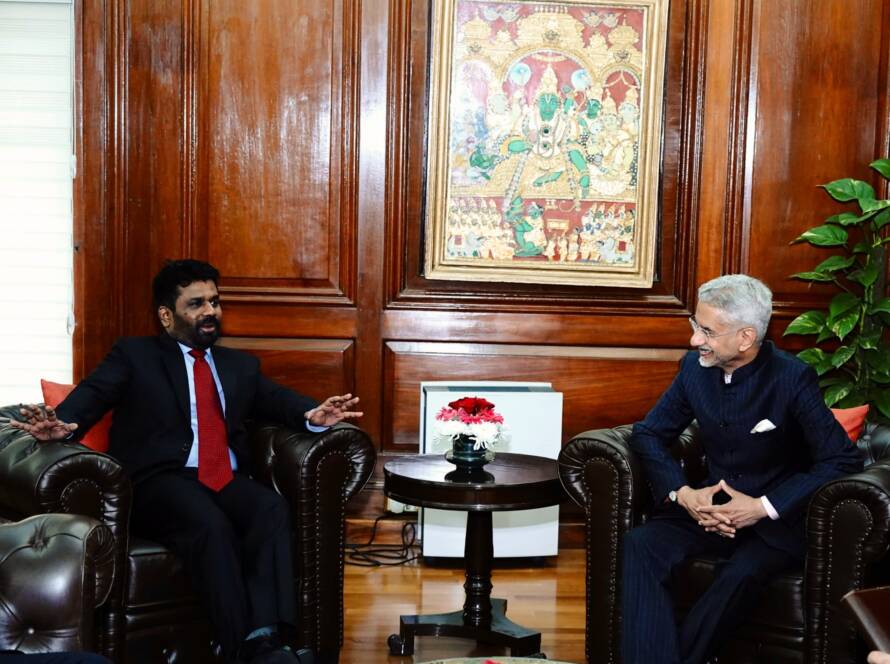By Uditha Devapriya
During a recent conference at the Milken Institute, US Congressman Seth Moulton contended that if the Chinese army invaded Taiwan, the US should not hesitate to blow up Taiwan Semiconductor Manufacturing Company (TSMC).
Moulton’s remarks were immediately noted by Taiwanese authorities. On Monday, May 8, the country’s Minister of National Defence Chiu Kuo-cheng stated that Taiwanese armed forces would not tolerate the destruction of any Taiwanese facility by any military.
Moulton’s remarks were also questioned by other US officials. Michele Flournoy, a Defence Policy Advisor, pointed out that if TMSC was destroyed, the US would “put manufacturing around the world at a standstill” and in effect cause a “two trillion-dollar impact on the global economy within the first year.” For some reason, Western media outlets did not cover Moulton’s statement or the responses to it. Chinese media, by contrast, had a field day, with China Daily noting that such remarks indicated that the US does not “reciprocate the love of its followers on the island, treating them instead as dispensable tools.”
While there is no doubt that Moulton has put the US political and military establishment in a tight spot, this is hardly the first time such remarks have been made. What is intriguing about them is that Moulton took part in a meeting with the Taiwanese President last month, where he highlighted the need to resist Chinese aggression. It is the contradiction between such displays of concern and his recent statements, rather than the statements themselves, which have put to question US motives in Taiwan. To quote China Daily, Taiwan has become a mere pawn, and the US “will not hesitate… to sacrifice the pawn.”
The US establishment, of course, is united on Taiwan. Even the Left, represented by the Bernie Sanders wing of the Democratic Party, is opposed to US aggression in general but views China as an aggressor in itself, a violator of human rights. On the other hand, the US is not too keen on prolonging tensions. While it’s too early to say whether Washington, Beijing, and Taipei are trapped in a Mexican standoff, the cycle remains much the same: an active show of belligerence, usually by the US, followed by a toning down of tensions. Last year, for instance, Nancy Pelosi’s historic visit, which broke the calm and put US-China relations at their worst nadir since the late 1990s, was followed by a gradual de-escalation of hostilities by Washington, after Joe Biden’s meeting with Xi Jinping in Bali.
In that sense, how does US policy on China-Taiwan stand out? First, it is not too different from US policy on the Russia-Ukraine War. The priority for the US is not so much to bomb Russia out of existence, using Ukraine, as to overextend the war, putting an intolerable strain on the Russian economy. Interestingly, that ties in with Russian policy as well: Moscow’s aim is not so much to win the war as to extend it. This is how and why each can argue that they are winning over the other, even though, in reality, no side is winning or losing. On the other hand, as Vinod Moonesinghe has noted in a recent essay, the US will not hesitate to impose privations on other states – its European allies in the case of Ukraine, its East and South-East Asian allies in the case of Taiwan – to secure its interests.
Second, there is a clear and present discrepancy between official US policy and belligerent remarks by Congressmen and other lobby groups. This is as true of US policy on China as it is of US policy on Russia. Such statements will provoke countries to react, but more often than not they will be questioned and dismissed by US officials themselves, so as to maintain the perception (can one call it fiction?) that there is a gulf between official policy and personal opinion. Michele Flournoy’s response to Moulton’s remarks at the recent conference, as well as Biden’s actions after Nancy Pelosi’s visit last year, are just two examples.
Third, and most crucially, there is an ongoing debate in the US over what constitutes the bigger threat. Some point to Russia, others point to China. Recent developments, however, suggest that while the US government is willing to raise its stakes against Russia, it has set limits on how far it will go over China. At the same time, it cannot risk being seen to go soft on Beijing. This explains the recent spy balloon saga. Reduced to its barest essentials, that episode showed the US trying to reassert control, at a time when the government’s motives in Taiwan were being questioned by the Republican right.
Thus, while at one level there is a clear congruence of interests, motives, and strategies between Ukraine and Taiwan, the US establishment views the two differently. The military industrial establishment can raise its stakes in Ukraine because, with all respect to those who view Russia as the bigger threat, Russia is not the powerhouse that China is. My own view is that the real victory, for the US, has been more ideological than economic. Indeed, given the convergence of Russian and Chinese military interests, as the burgeoning arms trade between the two countries shows, it is doubtful whether US intervention in Ukraine has benefitted the US militarily, let alone economically. On the flip side, the US has managed to use the conflict to rope in Finland and Sweden to NATO.
Given all this, Moulton’s remarks, belligerent as they are, cannot be seen as isolated or distinct, an exception to the golden rule. It is a continuation of a long cycle, the long Cold War between two competing superpowers. To be sure, US policy on China does not differ much from US policy on Russia. But there is no doubt that the establishment views China as the bigger threat. Paradoxically, this has set down limits on how far it can go to counter that threat. While recognising these limits, US officials, in particular those from the governing party, like Moulton, will from time to time say and do things which upset the general order, but which are actually said and done to defuse a bigger threat: the Republican charge that the government is not doing enough to protect Taiwan.
Indeed, while there is a definite consensus in the US over Ukraine, Republicans are divided on Russia. The Far Right fetishizes Putin and his allies. The Democrats are busy using that to criticize their opponents. In doing so, they face a quandary. If they tone down their rhetoric on China, they will risk giving Republicans the ammunition the latter need to embarrass the government. Hence, while tacitly carrying on a policy of not raising the stakes too much on China, individual US officials will continue to stray away from the official line, suggesting the most incredibly provocative policies. Often, as with Moulton’s remarks, this approach can be damaging. But so long as they are rebuffed by more official figures – as Moulton was at the recent forum – they will fall within that long cycle I referred to, of a temporary escalation of tensions being followed by gradual, but inevitable, de-escalation.
Uditha Devapriya is the Chief Analyst – International Relations at Factum and can be reached at uditha@factum.lk.
Factum is an Asia-Pacific focused think tank on International Relations, Tech Cooperation and Strategic Communications accessible via www.factum.lk.
The views expressed here are the author’s own and do not necessarily reflect the organization’s.


